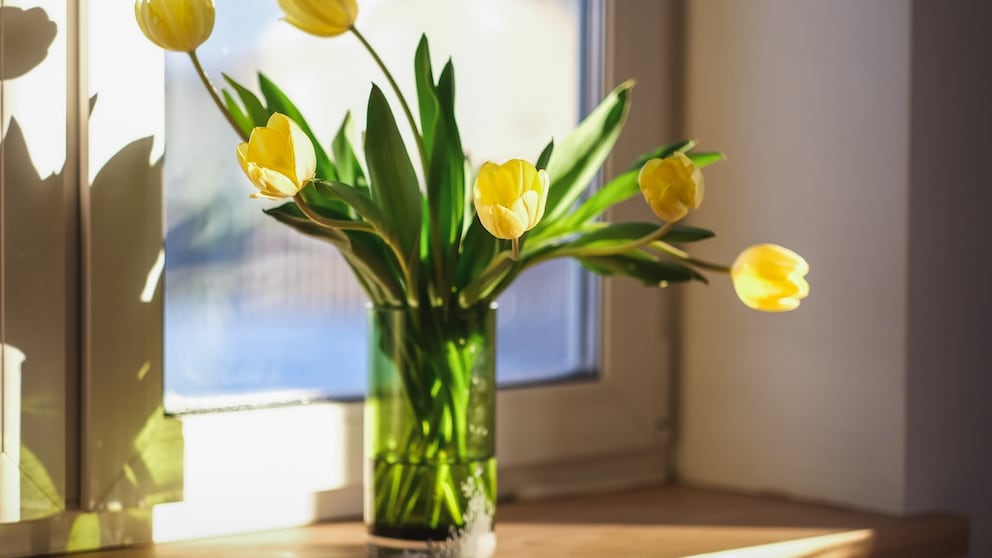March 16, 2025, 2:51 pm | Read time: 2 minutes
After a dreary winter, many people long for color and life in their homes. That’s why cut flowers are sometimes particularly popular in spring. Unfortunately, they don’t usually last long. However, with prices of up to twelve euros for a few tulips, one would want them to stay beautiful for as long as possible. Bleach can be the solution.
Whether tulips, roses, or a mixed bouquet — when you treat yourself to flowers or receive them as a gift, you want them to last as long as possible. Often, the first flowers drop their heads after just a few days — a disappointment. That doesn’t have to be the case. A little bleach in the water can help to keep cut flowers fresh for longer.
Why Bleach Is Good for Cut Flowers
Bleach is normally used for stubborn stains or to clean white curtains. But many people don’t know this: Bleach can also be useful for flower water, reveals Andrea Kirchhoff from the Association of German Flower Wholesalers and Importers (BGI). “A splash of vinegar or a few drops of bleach will keep the water clean. The dosage naturally depends on the amount of water. Too much bleach or water that is too acidic can also damage the flowers.”
Beforehand, the vase should be filled two-thirds full with water at room temperature. Keeping the flowers fresh would be ideal, as it not only keeps the water free of bacteria but also contains nutrients for the flowers.

Bad Odor Musty-Smelling Bed Linen in the Wardrobe? What You Can Do

Widespread misconception! Why the washing machine’s quick wash program does not save money

Store-Bought or Home-Grown Store Radishes Correctly So That They Stay Crunchy for a Long Time
How to Keep Flowers Fresh for Longer
It is important not only to add bleach or other additives to the cut flower water but also to prepare the plants, explains the expert. “The stems should be cut at an angle of two to three centimeters with a sharp knife so that they can absorb enough water (cut tulips and daffodils straight).” Then, you should definitely remove the lower leaves. No leaves should be allowed to hang into the water later, as bacteria can multiply particularly well on them.
As soon as the water becomes cloudy, you should replace it immediately and cut the flowers again. “This is because the bacteria in the water block the pathways that the flowers use to absorb water,” explains Kirchhoff. The best place to keep the flowers fresh is in a cool and bright location. Places that are too dark or too warm are harmful to cut flowers.

